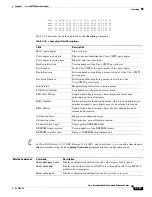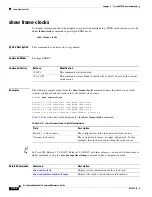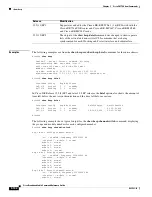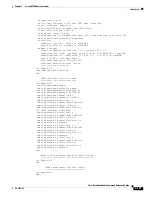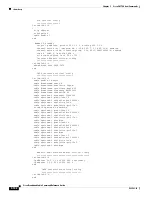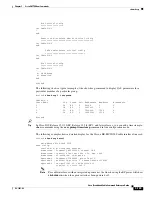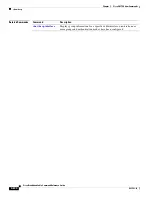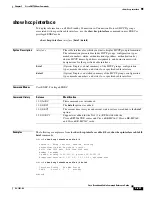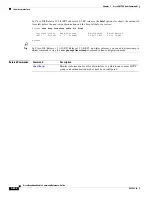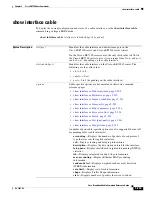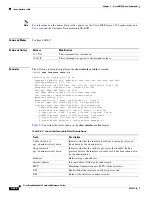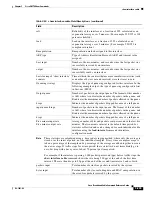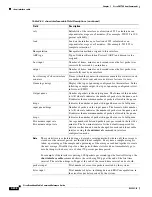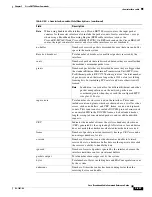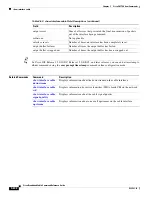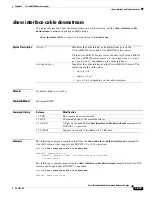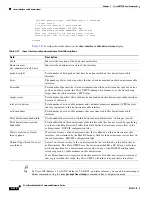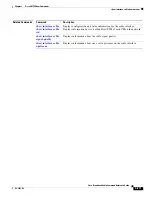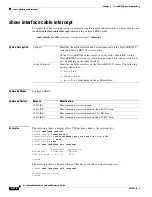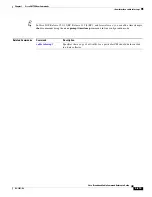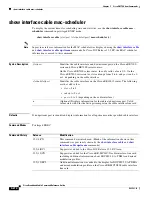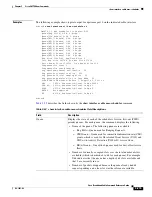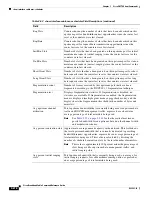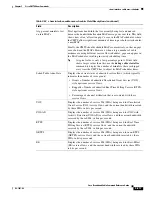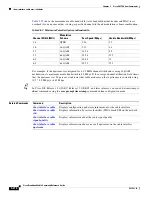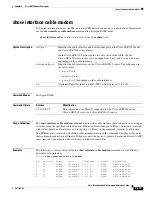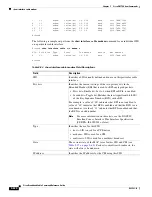
3-205
Cisco Broadband Cable Command Reference Guide
OL-1581-08
Chapter 3 Cisco CMTS Show Commands
show interface cable
rely
Reliability of the interface as a fraction of 255, calculated as an
exponential average over 5 minutes. (For example, 255/255 is 100
percent reliability.)
load
Load on the interface as a fraction of 255, calculated as an
exponential average over 5 minutes. (For example, 255/255 is
complete saturation.)
Encapsulation
Encapsulation method assigned to this interface.
ARP type
Type of Address Resolution Protocol (ARP) and timeout value
assigned.
Last input
Number of hours, minutes, and seconds since the last packet was
successfully received by an interface.
output
Number of hours, minutes, and seconds since the last packet was
successfully sent by an interface.
Last clearing of “show interface”
counters
Time at which the counters that measure cumulative statistics (such
as number of bytes sent and received) were last reset to zero.
Queueing strategy
Displays the type of queueing configured for this interface. In the
following example output, the type of queueing configured is first-
in first-out (FIFO).
Output queue
Number of packets in the output queue. The format of this number
is A/B, where A indicates the number of packets in the queue, and
B indicates the maximum number of packets allowed in the queue.
drops
Indicates the number of packets dropped because of a full queue.
input queue/drops
Number of packets in the input queue. The format of this number
is A/B, where A indicates the number of packets in the queue, and
B indicates the maximum number of packets allowed in the queue.
drops
Indicates the number of packets dropped because of a full queue.
Five minute input rate
Five minute output rate
Average number of bits and packets sent per second in the last five
minutes. The five-minute interval is the default time period for
statistics collection and can be changed for each individual cable
interface using the
load-interval
command in interface
configuration mode.
Note
These statistics are calculated using a decayed averaging method, where only the average is
stored over the interval period, not the individual samples. Every time a sample average is
taken, a percentage of the sample and a percentage of the average are added together to create
the new average. If traffic stops for a time period, these statistics do not immediately go to
zero but drop with a decay rate of about 70 percent per time period.
For example, if the interface is passing 1,000 packets per second (pps) before traffic stops, the
show interface cable
command shows the rate being 300 pps at the end of the first time
interval. The rate then drops to 90 pps at the end of the second time interval, and so forth.
packets input
Total number of error-free packets received by the system.
bytes input
Total number of bytes, including data and MAC encapsulation, in
the error-free packets received by the system.
Table 3-50 show interface cable Field Descriptions (continued)
Field
Description

